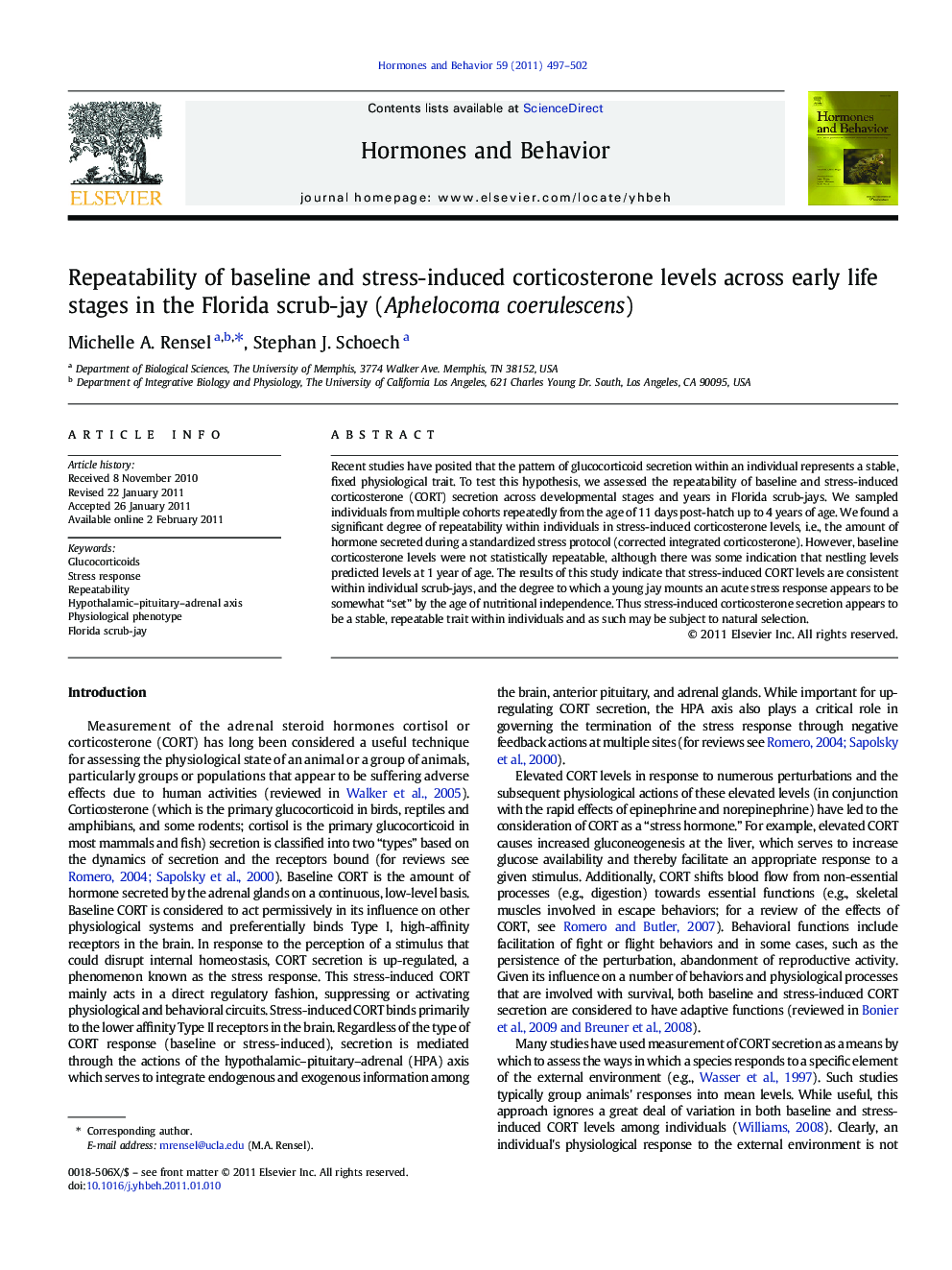| کد مقاله | کد نشریه | سال انتشار | مقاله انگلیسی | نسخه تمام متن |
|---|---|---|---|---|
| 323180 | 540522 | 2011 | 6 صفحه PDF | دانلود رایگان |

Recent studies have posited that the pattern of glucocorticoid secretion within an individual represents a stable, fixed physiological trait. To test this hypothesis, we assessed the repeatability of baseline and stress-induced corticosterone (CORT) secretion across developmental stages and years in Florida scrub-jays. We sampled individuals from multiple cohorts repeatedly from the age of 11 days post-hatch up to 4 years of age. We found a significant degree of repeatability within individuals in stress-induced corticosterone levels, i.e., the amount of hormone secreted during a standardized stress protocol (corrected integrated corticosterone). However, baseline corticosterone levels were not statistically repeatable, although there was some indication that nestling levels predicted levels at 1 year of age. The results of this study indicate that stress-induced CORT levels are consistent within individual scrub-jays, and the degree to which a young jay mounts an acute stress response appears to be somewhat “set” by the age of nutritional independence. Thus stress-induced corticosterone secretion appears to be a stable, repeatable trait within individuals and as such may be subject to natural selection.
Research highlights
► Baseline corticosterone levels were not significantly repeatable.
► Stress-induced corticosterone levels were repeatable within individuals.
► The responsiveness of the HPA axis was ‘set’ by nutritional independence.
Journal: Hormones and Behavior - Volume 59, Issue 4, April 2011, Pages 497–502